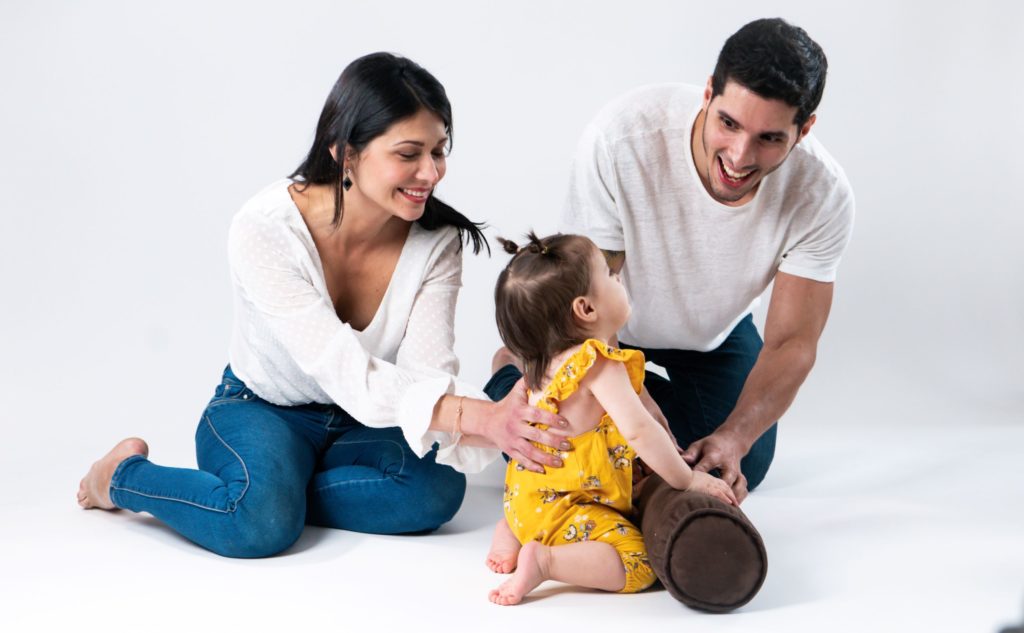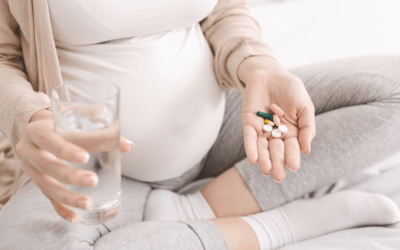The experts Etna Lagos and Anayansy Madelem Rivera explain how to maintain the processes of timely infant stimulation in babies and children during the health emergency.
One of the consequences of the confinements to stop the contagion of Covid-19, is the suspension or modification of the educational and recreational activities that children carried out without restrictions before the pandemic. Stimulation is one of them and we must seek strategies to maintain it so that all babies receive the necessary stimuli and the appropriate follow-up to continue their integral development.
Etna Lagos, national director of the Waal Foundation in Honduras, states that timely stimulation seeks to enhance the development of children according to their chronological age, as a basis for future learning. It clarifies that these activities are not intended to look for precocious children or to advance the stages of development.
Development is based on stages and each stage has its process and it is important that there is a balance between motor skills, intellectual capacity, the emotional part and within this the affective bonds occupy a very important part. “This balance helps the child to achieve autonomy and self-confidence, this ensures that he can self-regulate in his future challenges, such as entering school or relationships with other children and other people,” he says.
The expert confirms that it is important that parents are directly involved in these processes. With all the more reason, in the circumstance of health emergency in which the family spends many hours at home and that can be used to strengthen these activities and promote interaction between children, their parents and other family members.
“In the event of any deficiency in the baby, observed from birth or in later months, early intervention is required so that the child responds to the necessary stimuli and it is possible to match it to its chronological age,” he indicates. In the same way, it explains that before starting a stimulation process a medical evaluation is required in which the history of the baby is known since the mother’s pregnancy, the details of the delivery, the current situation of the child.
“Parents must be informed about how to carry out the stimulation process, since an inappropriate program can harm the child, by presenting problems such as, for example, skipping stages of growth. Sometimes we find children who do not crawl and go directly to walk, due to over stimulation, which will have a negative impact on the infant ”.
Practical tips for bringing timely infant stimulation into the home

Anayansy Madelem Rivera, physician, surgeon and last year resident of the Rehabilitation Medicine specialty at the National Autonomous University of Honduras, offers us an interview with recommendations to carry out timely stimulation at home.
From what age should timely infant stimulation be performed?
From 15 days after birth and in the event that the newborn has any comorbidity at birth that requires in-hospital management and early intervention, such as low birth weight, sepsis, hemodynamic instability, respiratory distress, prematurity, malformations, Among others, it should be started when the newborn is stable, with a minimum weight of 2 kilos for certain interventions. For this reason, a prior assessment is essential when starting a stimulation program, by the specialist in Rehabilitation.
In the current context of the pandemic and confinements, should child stimulation be maintained at home?
Yes, and it is in these times of pandemic that an adequate early stimulation program is necessary, since confinement acts as an environmental factor that has a negative impact on the development of babies, interfering among many things in the way we we relate to our environment and society. Babies are not exempt from being affected by these changes.
How can they be stimulated at home?
It is important that the person who performs or teaches how to perform timely stimulation knows the essential areas to work on. These are, motor area, communication / language area, cognitive area, sensory area and socio-affective area.
Another point to take into account is that you must have the basic knowledge of the expected development, according to the infant’s ages, since stimulation seeks to ensure and enhance the acquisition of neurodevelopmental milestones, which will be formed according to chronological development of the baby, in order to avoid altering or skipping the natural order of acquisition of them.
What time guidelines, routine, activities should be followed?
To establish this, it is important to know the attention span of children according to their maturing age. In general, it is mentioned that the adequate time dedicated to carry out an activity according to age is, in newborns and even babies of 1 year, a maximum of 3 minutes.
With children up to 2 years old, between 8 to 10 minutes, and infants up to 3 years old, the activities can be carried out in a time of 10 to 12 minutes. The guideline for how long it can be stimulated will be given by the child himself. It is important to mention that as long as the baby is attentive, entertained and enjoys the activity that is being carried out, it can continue to be stimulated, and it must be concluded or interrupted at the moment that it begins to show inattention, irritability or discomfort.
The routine can be established at any time of the day, so that mom and dad can adapt it according to their schedule of activities, in order to guarantee compliance. It is also recommended that it be established after the child has satisfied his basic needs for food, nap, defecation. It is important to take into account that it is better to start 1 to 2 hours after feeding, to prevent vomiting or reflux.
¿Qué cuidados de bioseguridad se deben aplicar en casa al realizar la estimulación?
The general recommendations are:
- Carry out the stimulation program in a clean and disinfected area, ideally intended exclusively for working with the child.
- Working with objects that do not pose a risk to the baby, especially those that do not put them in the mouth.
- The person in charge of stimulation must be healthy. At the time of executing the stimulation program, the child must be under continuous surveillance by the parents or those responsible for stimulating him.
¿Quiénes deben realizar esta estimulación en los bebés y niños?
The objective of the intervention is for parents to receive training, guidance and teaching from the rehabilitation physician and / or the therapist, if any, in order to empower the main caregiver to perform adequate early stimulation and thus ensure their compliance. By exception and under medical recommendation, the baby must be stimulated by a therapist.
In the following links you can access different publications with stimulation exercises:
Manual for parents: Early childhood stimulation activities for children up to 3 years of age, from the Inter-American Development Bank (IDB), specially edited for the Covid-19 health emergency.
Orientation guide to families Stimulation and development in the emergency due to COVID-19. from pregnancy to 4 years (Unicef)
Coronavirus COVID19: Confinement and Early Care
https://neuropediatra.org/2020/03/14/coronavirus-covid19-confinamiento-y-atencion-temprana/



